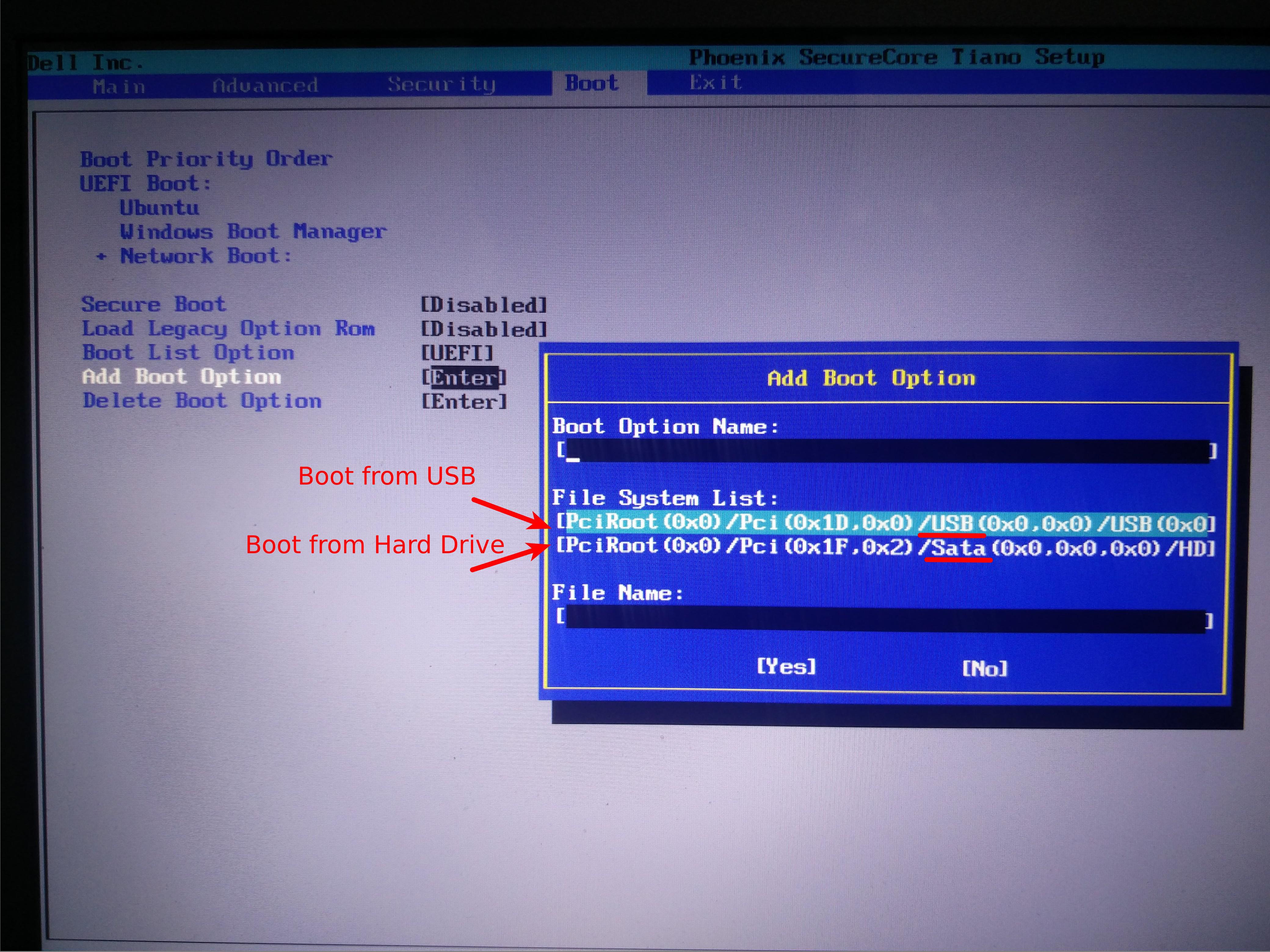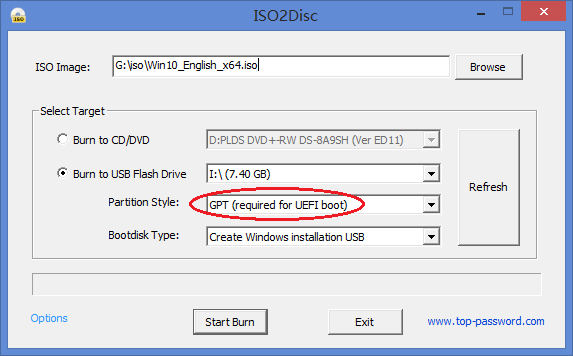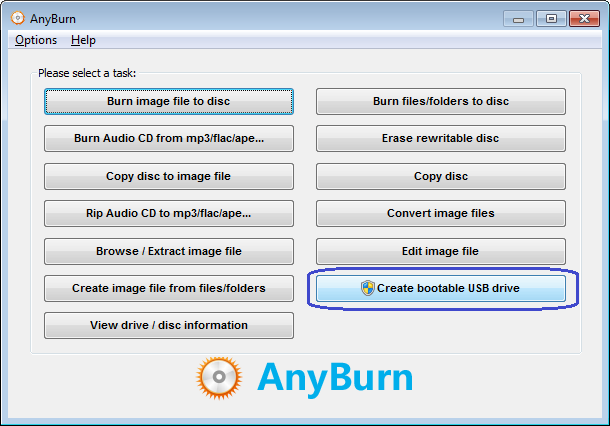

- #Install bootloader on usb drive install
- #Install bootloader on usb drive update
- #Install bootloader on usb drive upgrade
- #Install bootloader on usb drive plus
I ran "sudo rpi-update" and confirmed that I wanted to do it. I checked around, and found another article that included using the command "rpi-update" after the "apt full-upgrade", with a reboot after the "rpi-upgrade". I didn't see any new ".elf" files in the repository. It said the ".elf" files would be made available soon. I went to the Raspberry Pi "downloads" link and read the release notes for the beta bootloader. I turned it off and put my usual boot SD (an 8 gig with a modified "cmdline.txt" file to put root on /dev/sda5) into the board, powered the PI back up and it booted fine.

The monitor showed a text console telling me that it could not find "recovery.elf" and that "start.elf" is not compatible, and I should download the latest from a URL.

I shut down the Pi, turned off the power, and removed the SD card. I copied all of the files from the current "/boot" to the HD's boot partition (/dev/sda1), then edited the "etc/fstab" on /dev/sda5 to mount /dev/sda1 for "/boot" instead of the SD card partition. I connected the USB drive all of the partitions of note on the HD auto-mounted under "/media/daniel" (substitute your own username for "daniel").

I disconnected the external HD and booted off the 32 gig SD card I had originally installed Raspbian on and ran the same steps again.Īfter reboot, the "vcgencmd" reported the expected May 15th date.
#Install bootloader on usb drive update
I followed the directions for from the article, doing the "apt" update and full-upgrade, editing the file "/etc/defaults/rpi-eeprom-update" and performing the "rpi-eeprom-update" followed by a reboot.Īfter the update, I checked the firmware with "vcgencmd bootloader_version", but it reported the old firmware. The following are the steps I then followed: "/boot" was still mounted from the SD card in "/etc/fstab", but everything else was mounted from the external hard drive. It's much faster, and more spacious, than the SD card. I have been booting off of an SD card with my root file system on the external drive for months now with no problems. dev/sda8 ext4 (502.0 GiB) "future" (not mounted)Note that this does not follow the SD card partitioning (at least for the "Noobs" image) which appears to have "Recovery" as the primary partition, and in the extended partition, a partitions for "/boot", a "Settings" partition that doesn't seem to get mounted, and the root partition.
#Install bootloader on usb drive plus
In my case, I had partitioned the external drive (a 1TB Seagate "Backup Plus Portable" USB 3.0) as follows:
#Install bootloader on usb drive upgrade
I have successfully done the firmware upgrade without messing up my USB external drive contents or configuration. I installed GRUB (2) to /dev/sdb, but when I tried to boot from the flash drive I got the following message: Grub LoadingĪfter a couple of seconds I got an additional message: Read Errorįor testing purposes, I tried to delete the contents of /boot, and I got the same message after booting again from the flash drive.: I am not an authority on this, but my answer is a qualified "yes".
#Install bootloader on usb drive install
My plan was to install GRUB (2) to the flash drive ( /dev/sdb) and boot Linux from it's MBR, or if the drive was unplugged simply boot Windows from the hard drive's ( /dev/sda) MBR. Since /boot must be on a separate, unencrypted partition, I would like to store it on a USB flash drive. I'm trying to install Linux on an encrypted partition on the hard drive (using LVM on LUKS). How can I use a USB flash drive to boot Linux from a partition on (another) hard drive?


 0 kommentar(er)
0 kommentar(er)
